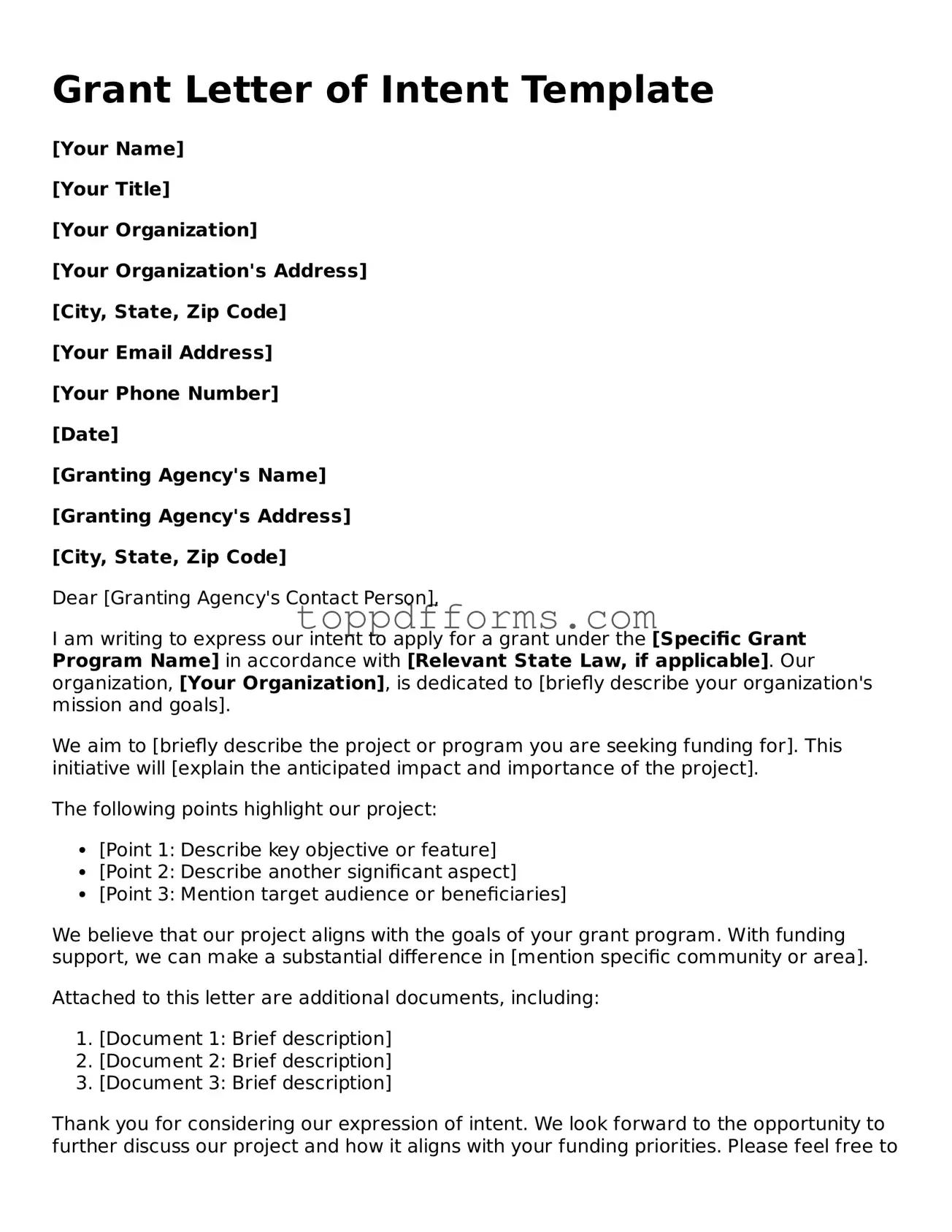When filling out the Grant Letter of Intent form, many individuals make common mistakes that can hinder their chances of success. One frequent error is failing to read the instructions thoroughly. Each grant may have specific requirements, and overlooking these can lead to submitting an incomplete or incorrect application.
Another mistake is not clearly stating the purpose of the grant. Applicants often provide vague descriptions instead of detailing how the funds will be used. A clear, concise explanation helps reviewers understand the intent and significance of the project.
Some people neglect to include relevant data or evidence to support their proposal. Providing statistics or case studies can strengthen the application and demonstrate the need for funding. Without this information, it may be difficult for reviewers to see the project's value.
Additionally, applicants sometimes forget to proofread their submissions. Typos and grammatical errors can create a negative impression. Taking the time to review the document can enhance professionalism and clarity.
Another common oversight is not adhering to word limits or formatting guidelines. Each grant letter may have specific requirements regarding length and structure. Ignoring these can lead to disqualification or a less favorable review.
Some individuals fail to highlight their organization’s qualifications. It's important to showcase past successes and relevant experience. This helps establish credibility and assures funders that their investment will be managed effectively.
Moreover, applicants often overlook the importance of deadlines. Submitting the letter late can result in automatic disqualification. Keeping track of timelines is crucial to ensure a successful application process.
Another mistake is not tailoring the letter to the specific grantor. Each funding organization has its own mission and priorities. A generic letter may not resonate with reviewers, while a tailored approach shows that the applicant has done their homework.
Finally, some people fail to follow up after submission. It's beneficial to check in with the grantor to confirm receipt of the application and express continued interest. This demonstrates professionalism and engagement, which can leave a positive impression.
